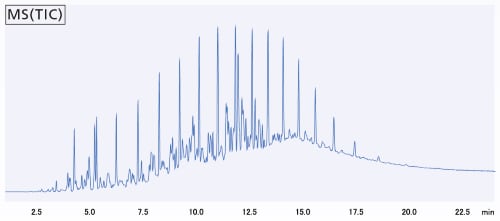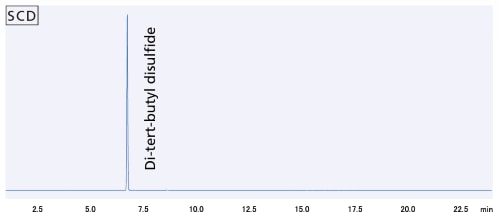Nexis GC-2030 - Applications
Gas Chromatograph

Most of the documents on the LITERATURE is available in PDF format. You will need Adobe Acrobat Reader to open and read PDF documents. If you do not already have Acrobat Reader, you can download it free at the Adobe's Website. Click the GET ADOBE READER icon on the left to download a free copy of Adobe Acrobat Reader.
Pharmaceuticals
UPS 467 Analysis of Residual Solvents in Pharmaceuticals
A headspace sampler maintains the sample at a constant temperature and then injects a fixed quantity of the gas phase generated into a GC unit. It is used for qualitative and quantitative analysis of volatile components in solid or liquid samples. The further strides in performance and user-friendly design of the HS-20 NX series provide strong support for a wide variety of analyses, from work in research departments to quality control.

Analysis of Trace Residual Solvents in Pharmaceuticals Using Headspace GC, Class 2 Standard Solution
Food
Analysis of Residual Pesticide in Foods
When analyzing residual pesticides in foods, it is advantageous to use a high-sensitivity selective detector. In contrast, an FID, which is suitable for a general-purpose application, is used to comprehensively measure many different pesticides.
Using an ECD/FPD detector configuration provides high-sensitivity analysis of phosphorus, sulfur, and halogen while an FID measures a wide variety of pesticides.
-
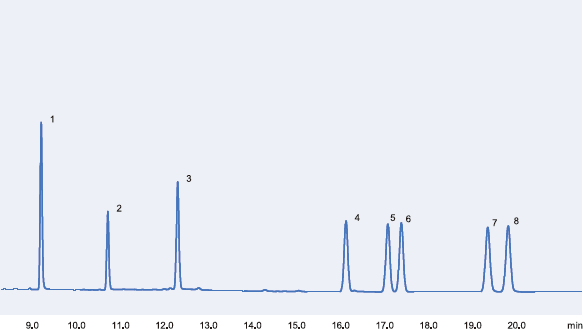
Analysis of Chlorinated Pesticides in Traditional Chinese Medicines via ECD
- 1 Hexachlorobenzene
2 Quintozene
3 Heptachlor
4 Oxychlordane - 5 Heptachlor-2,3-exo-epoxide
6 Heptachlor endo-epoxide
7 trans-Chlordane(γ)
8 cis-Chlordane(α)
- 1 Hexachlorobenzene
-
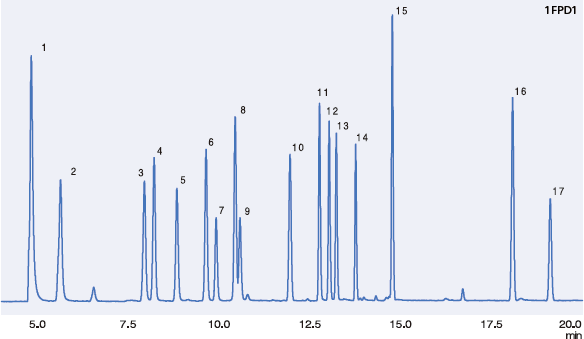
Analysis of Phosphorus Pesticides in Carrots via FPD
- 1 Omethoate
2 Ethoprophos
3 Phorate
4 Fonofos
5 Diazinon
6 Iprobenfos
7 Chlorpyrifos-methyl
8 Paraoxon
9 Fenitrothion - 10 Bromophos
11 Crotoxyphos
12 Disulfoton sulfone
13 Bromophos-ethyl
14 Profenofos
15 Ethion
16 leptophos
17 Pyrazophos
- 1 Omethoate
-
Analysis of Sulfur Compounds in Beer
Sulfur compounds in beer, which affect the aroma of the beer, can be quantified in the order of ng/mL by combining the headspace injection method and an SCD. -
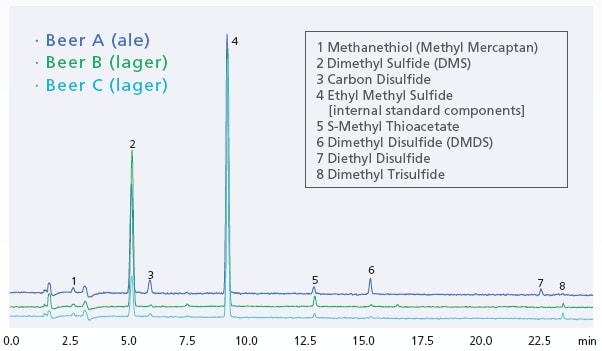
Chromatograms of Three Kinds of Beer
New Energy
Analysis of Impurities in Hydrogen Gas
Dual BIDs
The Nexis GC-2030 can be equipped with two BIDs. More qualitative information can be obtained from the same sample by attaching columns with different separation characteristics.
-
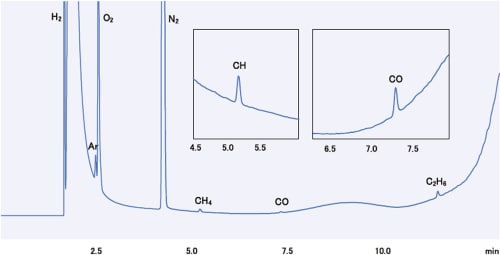
O2: approx. 100 ppm, N2: approx. 340 ppm,
Other impurities: approx. 0.2 ppm -
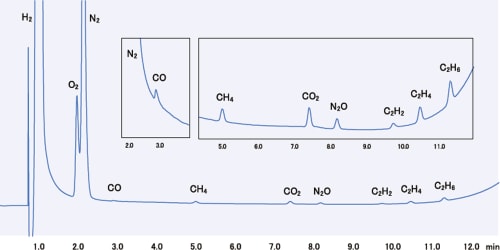
O2: approx. 25 ppm, N2: approx. 160 ppm, CO2: approx. 0.4 ppm,
Other impurities: approx. 0.2 ppm
Simultaneous Analysis of Impurities in Hydrogen
Related Application News
Petrochemical
Refinery Gas Analysis System
Specialized systems can be configured by installing multiple valves and columns in the standard Nexis GC-2030 installation space. Inorganic gases, hydrocarbons, hydrogen sulfides, and other components can be analyzed within five and a half minutes. Method development is not required because systems are assembled and tested in advance at the factory, prior to arriving at your lab.

-
- [FID]
1. C6+
2. Methane
3. Ethane
4. Ethylene
5. Propane
6. Propylene
7. Isobutane
8. n-Butane
9. Propadien
10. Acetylene
11. trans-2-Butene - 12. 1-Butene
13. i-Butene
14. cis-2-Butene
15. Isopentane
16. n-Pentane
17. 1,3-Butadien
18. Methylacetylene
19. trans-2-Pentene
20. 2-Methyl-2-butene
21. 1-Pentene
22. cis-2-Pentene
- [FID]
-
- [TCD-1]
23. Carbon dioxide
24. Ethylene
25. Ethane
26. Acetylene
27. Hydrogen sulfide
28. Oxgen
29. Nitrogen
30. Methane
31. Carbon Monoxide - [TCD-2]
32. Hydrogen
- [TCD-1]
-
Analysis of Simulated Distillation
Simulated Distillation GC Analysis Software integrated with LabSolutions is compliant with ASTM, ISO, and various other standards that specify distillation GC. With high boiling point
compounds, sample loss can be minimized by using the OCI-2030 NX injection port.
-

Chromatogram of Polywax (ASTM D 7500)
Monitoring Sulfur in Diesel Oil Distillates
Using a detector splitting device with minimal dead volume, it is possible to analyze the components in diesel oil comprehensively with MS, while simultaneously measuring* the sulfur components selectively and with high sensitivity using an SCD.
Simultaneous Analysis of Sulfur Standard Components in Diesel Using GC-MS and SCD
* LabSolutions DB GCMS or LabSolutions CS is required to acquire data simultaneously from a GCMS and SCD.
Environment
-
Analysis of VOCs in Work Environments
Trace components in the air can be concentrated for measurement via thermal desorption. The TD-30 can accommodate up to 120 samples, and thanks to the repeated collection function, if a precious sample is analyzed incorrectly, it can be measured again. -
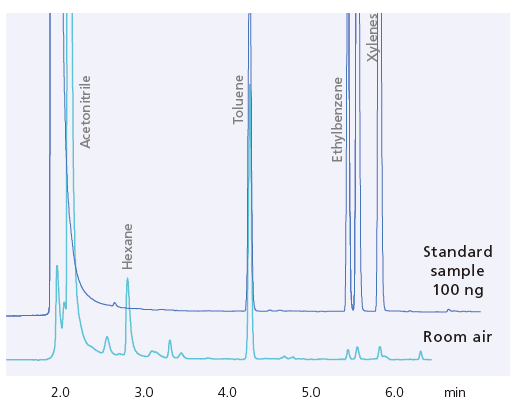
Analysis of VOCs in Work Environments



